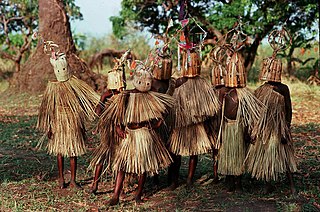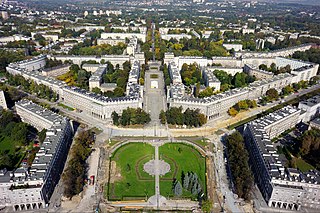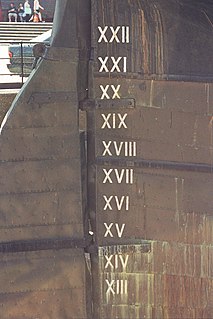
The University of California, Davis, is a public research university and land-grant university adjacent to Davis, California. It is part of the University of California (UC) system and has the third-largest enrollment in the UC System after UCLA and UC Berkeley. The institution was founded as a branch in 1909 and became its own separate entity in 1959. It has been labeled one of the "Public Ivies", a publicly funded university considered to provide a quality of education comparable to those of the Ivy League.

The California State University is a public university system in California. With 23 campuses and eight off-campus centers enrolling 484,300 students with 26,858 faculty and 25,305 staff, CSU is the largest four-year public university system in the United States. It is one of three public higher education systems in the state, with the other two being the University of California system and the California Community Colleges System. The CSU System is incorporated as The Trustees of the California State University. The California State University system headquarters are at 401 Golden Shore in Long Beach, California.

Sather Tower is a bell tower, with clocks on its four faces, on the University of California, Berkeley campus, more commonly known as The Campanile for its resemblance to the Campanile di San Marco in Venice. It is the university's most recognizable symbol. Given by Jane K. Sather in memory of her husband, banker Peder Sather, it is the third-tallest bell-and-clock-tower in the world. Its current 61-bell carillon, built around a nucleus of 12 bells also given by Jane Sather, can be heard for many miles and supports an extensive program of education in campanology.
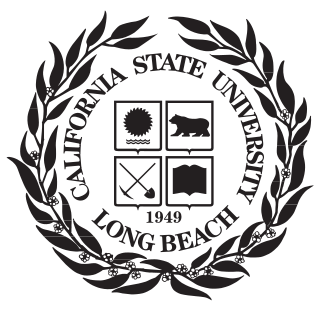
California State University, Long Beach is a public university in Long Beach, California. It is the third largest campus of the 23-school California State University system (CSU) and one of the largest universities in the state of California by enrollment, its student body numbering 37,776 for the Fall 2016 semester. The university continues to receive record numbers of applicants; for Fall 2018, it received 102,000 undergraduate applications—the most of any CSU campus. As of Fall 2014, the school had 2,283 total faculty, with 36.7 percent of those faculty on the tenure track. With 5,286 graduate students, the university enrolls one of the largest graduate student populations across the CSU system and in the state of California. The university is located in the Los Altos neighborhood of Long Beach at the southeastern coastal tip of Los Angeles County, less than one mile from the border with Orange County. The university offers 82 different Bachelor's degrees, 65 types of Master's degrees, and four Doctoral degrees.

California Lutheran University is a private, liberal arts university in Thousand Oaks, California. It was founded in 1959 and is affiliated with the Evangelical Lutheran Church in America, but is nonsectarian. Its mission is "to educate leaders for a global society who are strong in character and judgment, confident in their identity and vocation, and committed to service and justice". It opened in 1960 as California Lutheran College and was California's first four-year liberal arts college and the first four-year private college in Ventura County. It changed its name to California Lutheran University on January 1, 1986.

California Polytechnic State University is a public university located in San Luis Obispo, California. It is one of two polytechnics in the California State University system.

Mills College is a private liberal arts and sciences college in Oakland, California. Mills was founded as the Young Ladies Seminary in 1852 in Benicia, California. The school was relocated to Oakland, California, in 1871, and became the first women's college west of the Rockies. Currently, Mills is an undergraduate women's college with graduate programs for students of all genders. In 2014, Mills became the first single-sex college in the U.S. to adopt an admission policy explicitly welcoming transgender students.

California State Polytechnic University, Pomona is a public polytechnic university in Pomona, California. It is one of two polytechnics in the California State University system.
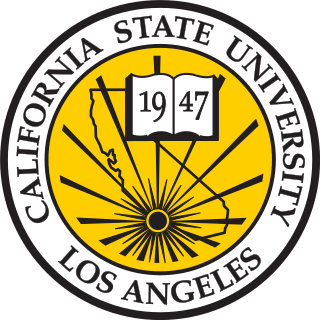
California State University, Los Angeles is a public comprehensive university in the heart of Los Angeles, one of the 23 universities in the California State University (CSU) system. Cal State LA is located in the eastern region of Los Angeles, California, United States, in the University Hills district, facing the San Gabriel Mountains, at the center of Los Angeles metropolitan area just five miles (8 km) east of Downtown Los Angeles.

The Gallatin School of Individualized Study is a small interdisciplinary college within New York University. Students design their own interdisciplinary program that meets their specific interests and career goals. Coursework can be taken at any of the schools that comprise NYU in addition to the school's own offerings.
The California Master Plan for Higher Education of 1960 was developed by a survey team appointed by the UC Regents and the State Board of Education during the administration of Governor Pat Brown. Clark Kerr, then the President of UC, was a key figure in its development. The Plan set up a coherent system for postsecondary education which defined specific roles for the already-existing University of California (UC), the California State College (CSC) system of senior colleges, now California State University (CSU), and the California Community Colleges system (CCC).

Oxnard College, an accredited two-year institution of higher education. Located in Oxnard, California, it has been a part of the Ventura County Community College District since 1975.
Stern Hall is an all-female residence hall at the University of California, Berkeley, constructed and operated by the University. It was built in 1942 on a $258,000 grant from Rosalie Meyer Stern, daughter of Marc Eugene Meyer and widow of Sigmund Stern, class of 1879. It is the sister hall to Bowles Hall, the all-male residence on campus. The Hall was first opened for 90 undergraduate women; currently it houses approximately 267. It is located at Hearst Avenue and Highland Place.

The Orfalea College of Business is one of six colleges at California Polytechnic State University.
The Cal Poly Pomona College of Environmental Design (CENV) is a college part of the California State Polytechnic University, Pomona. The college houses over 1,600 students; making it one of largest environmental design programs in the United States. The college offers bachelor's degrees in five departments, as well as three master's degree programs. It is the only academic unit within the California State University system to be associated with a Pritzker Prize laureate.
The history of the University of California, Berkeley can be traced to the establishment of the private College of California and its merger with the Agricultural, Mining, and Mechanical Arts College to form the University of California in 1868.

The Jalpaiguri Government Engineering College, abbreviated as JGEC, is a public engineering institution established in 1961. It is situated in the Jalpaiguri, the divisional headquarters of the eight districts of North Bengal. The university offers bachelor's degrees (B.Tech) in six branches and master's degrees (M.Tech) in two branches of engineering. The students and alumni of JGEC are informally referred to as JGECians or Joluites. JGEC has the largest campus among all government engineering colleges in the state of West Bengal. JGEC holds two student festivals: JECLAT and Sristi.

The University of California Jazz Ensembles, also known as the UC Jazz Ensembles, UC Jazz, or UCJE, is the student jazz organization founded in 1967 on the University of California, Berkeley, campus. Founded in 1967, it comprises one or more big bands, numerous jazz combos, a vocal jazz ensemble, an alumni big band, and instructional classes. With a mission statement to foster a community for the performance, study, and promotion of jazz at U.C. Berkeley, its Wednesday Night big band provides free concerts every Thursday noon on Lower Sproul Plaza, its various units perform throughout the San Francisco Bay Area including area high schools, travel to collegiate jazz festivals, and perform overseas, and for many years it sponsored the annual Pacific Coast Jazz Festival. It also provides master classes by its instructors and clinics by prominent guest artists. It has nurtured numerous musicians who have become professional jazz musicians and educators. UC Jazz Ensembles is one of three groups, with the Cal (marching) Band and UC Choral Ensembles, forming Student Musical Activities (SMA), a department within Cal Performances on the U.C. Berkeley campus. Its members are primarily U.C. Berkeley undergraduate and graduate students, representing many academic disciplines.

Occupy Cal included a series of demonstrations that began on November 9, 2011, on the University of California, Berkeley campus in Berkeley, California. It was allied with the Occupy Wall Street movement in New York City, San Francisco Bay Area Occupy groups such as Occupy Oakland, Occupy Berkeley, and Occupy San Francisco, and other public California universities. "Cal" in the name "Occupy Cal" is the nickname of the Berkeley campus and generally refers specifically to UC Berkeley.

